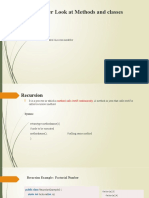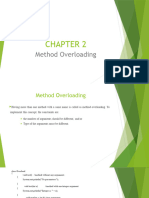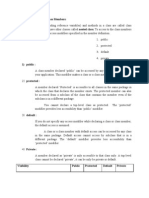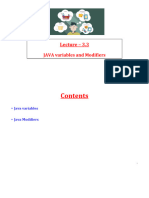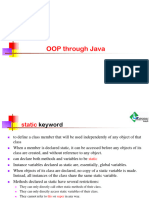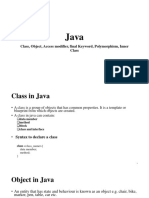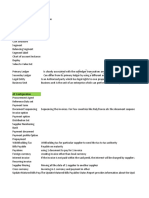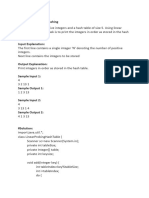0% found this document useful (0 votes)
9 views34 pagesLesson 06 Methods and Encapsulation
This document covers key concepts in Core Java, focusing on methods, encapsulation, static keyword, constructors, and access modifiers. It explains how to define and use methods, the significance of static methods, the creation and overloading of constructors, and the principles of encapsulation. Additionally, it provides examples and key takeaways to reinforce the learning objectives.
Uploaded by
pradeep191988Copyright
© © All Rights Reserved
We take content rights seriously. If you suspect this is your content, claim it here.
Available Formats
Download as PDF, TXT or read online on Scribd
0% found this document useful (0 votes)
9 views34 pagesLesson 06 Methods and Encapsulation
This document covers key concepts in Core Java, focusing on methods, encapsulation, static keyword, constructors, and access modifiers. It explains how to define and use methods, the significance of static methods, the creation and overloading of constructors, and the principles of encapsulation. Additionally, it provides examples and key takeaways to reinforce the learning objectives.
Uploaded by
pradeep191988Copyright
© © All Rights Reserved
We take content rights seriously. If you suspect this is your content, claim it here.
Available Formats
Download as PDF, TXT or read online on Scribd
/ 34


























